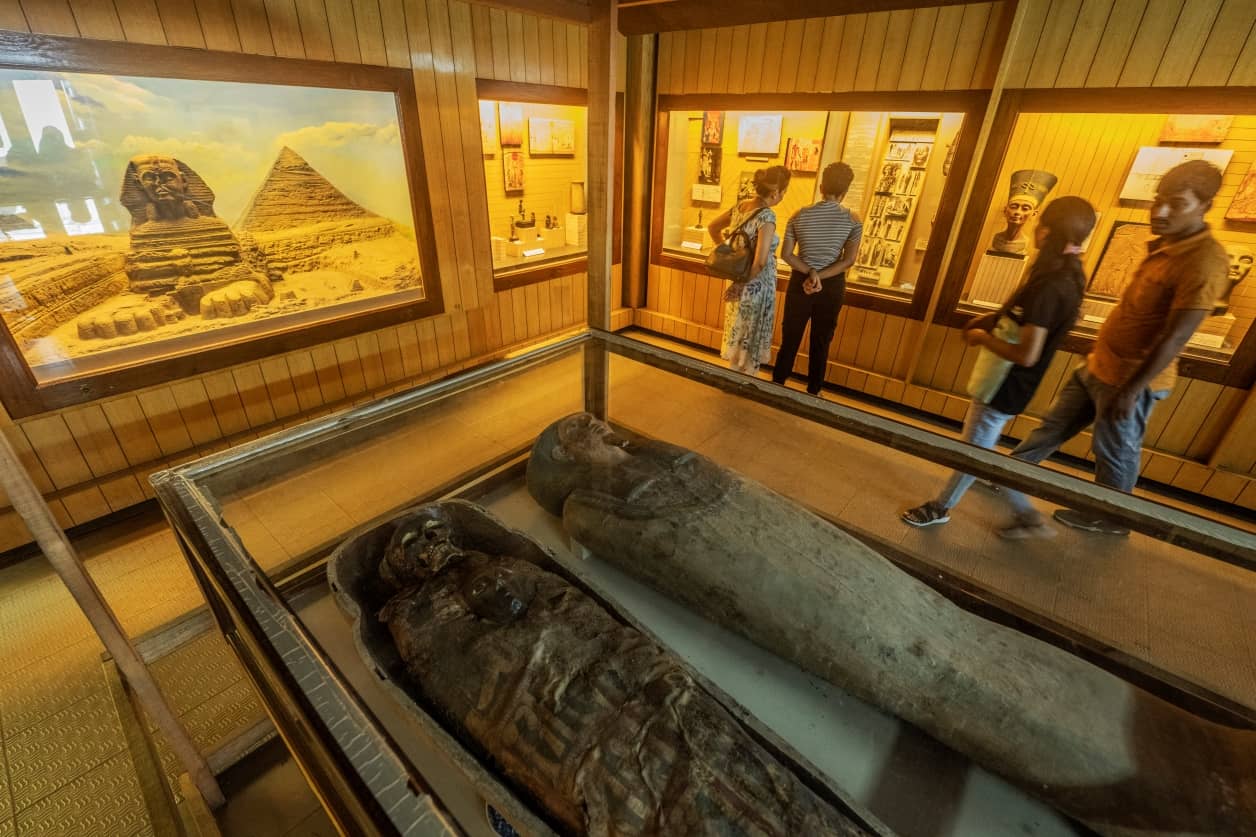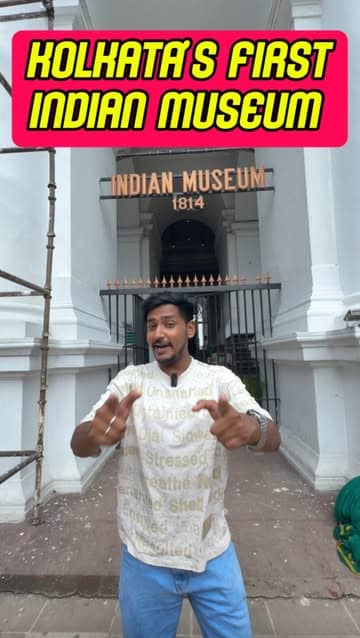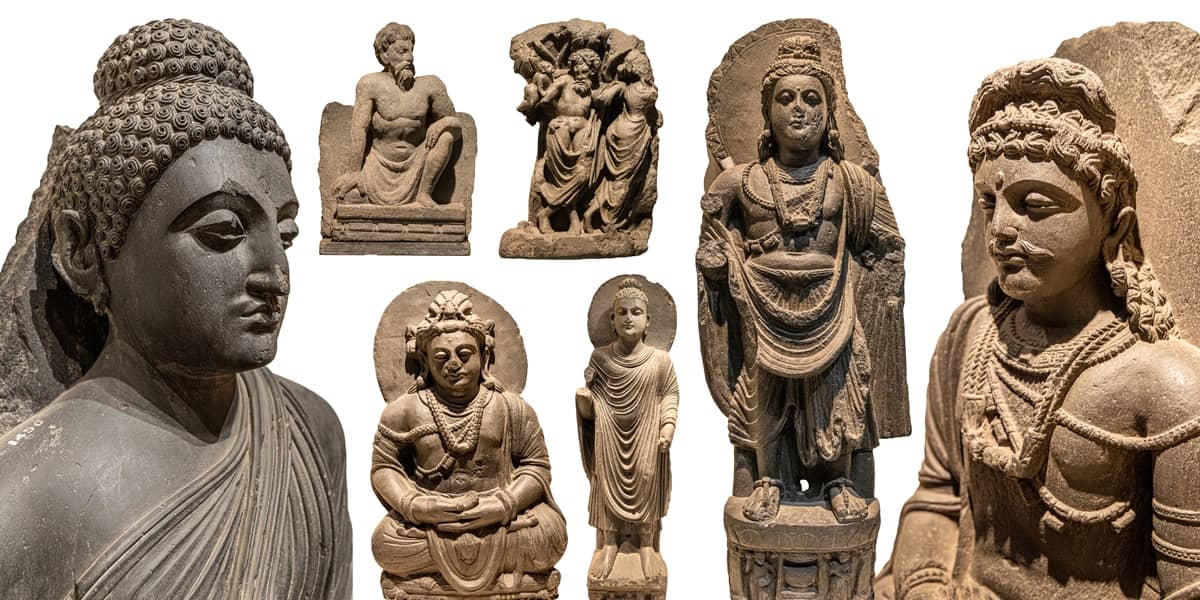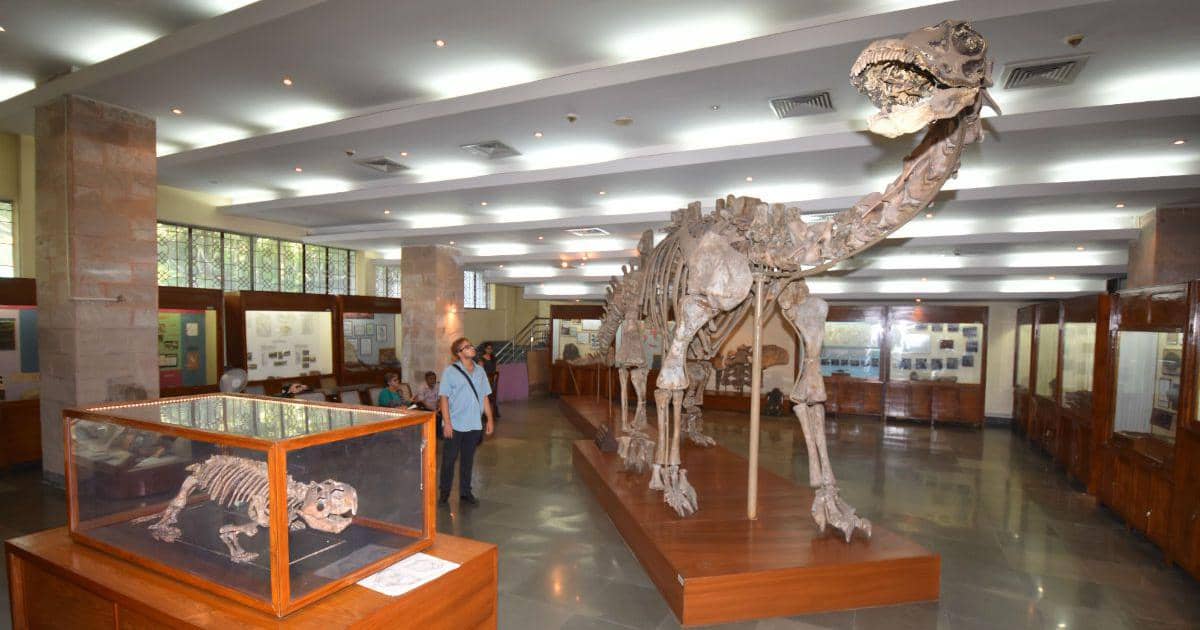
Indian Museum Kolkata
India's oldest and largest museum, housing a vast collection from ancient artifacts to natural history. A journey through history and culture.

Highlights
Must-see attractions

Social
From TikTok & Reddit
Best Time
Fewer crowds, more space to explore

Indian Museum Kolkata
Best Time
Fewer crowds, more space to explore

Highlights
Must-see attractions
India's oldest and largest museum, housing a vast collection from ancient artifacts to natural history. A journey through history and culture.
"The finest museum in India, a journey through history and culture, and an absolute must visit."

🎯 Go on Weekdays
Avoid weekend crowds by visiting on weekdays for a more peaceful experience.
⏰ Allocate Ample Time
Plan for at least 2-3 hours, or even 3-4, to truly explore the vast collections.

Highlights
Discover the most iconic attractions and experiences

Egyptian Mummy
Egypt Gallery
Discover a 4000-year-old Egyptian mummy, a surprisingly secret and surreal highlight for many visitors.

Ancient Sculptures
Archaeology Galleries
Marvel at remarkable Buddhist archaeological treasures from Gandhara and Bharhut Stupa railings.

Natural History Collection
Zoology & Geology Galleries
Explore fascinating galleries filled with fossils, skeletons, and a full-sized dinosaur display.
Plans like a pro.
Thinks like you
Planning Your Visit
Beat the Crowds
Photography Rules
Best Times
Insider Tips
from TikTok, Instagram & Reddit
🎯 Go on Weekdays
Avoid weekend crowds by visiting on weekdays for a more peaceful experience.
⏰ Allocate Ample Time
Plan for at least 2-3 hours, or even 3-4, to truly explore the vast collections.
🚫 Photography Restrictions
Photography of artifacts is generally prohibited. Be mindful of signs and staff instructions.
🏛️ Explore Lesser-Known Galleries
Don't miss the hidden gems; some of the most fascinating pieces are in the less-visited sections.
Tips
from all over the internet
🎯 Go on Weekdays
Avoid weekend crowds by visiting on weekdays for a more peaceful experience.
⏰ Allocate Ample Time
Plan for at least 2-3 hours, or even 3-4, to truly explore the vast collections.
🚫 Photography Restrictions
Photography of artifacts is generally prohibited. Be mindful of signs and staff instructions.
🏛️ Explore Lesser-Known Galleries
Don't miss the hidden gems; some of the most fascinating pieces are in the less-visited sections.
🚶♀️ Museum Date Idea
Consider a museum date for a unique and educational outing in Kolkata.
What Travellers Say
Reviews Summary
Visitors consistently praise the Indian Museum for its vast and diverse collection, calling it a must-visit for its historical and cultural significance. Highlights like the Egyptian mummy and ancient sculptures are frequently mentioned. However, some note that certain galleries feel outdated and could benefit from better lighting and descriptions.
"A must-visit in Kolkata! ✨
The Indian Museum established in 1814, is the oldest and largest museum in India, and the collection is truly impressive. Highlights include the Egyptian mummy, ancient Buddhist sculptures, and the natural history section with fossils and skeletons. The building itself is beautiful and full of history.
Tickets are very affordable(75₹), and the museum is easy to reach by metro or bus. However, some galleries feel outdated, and the displays could use better lighting and descriptions. Still, it’s an amazing place to learn about India’s rich heritage. Plan at least 2–3 hours to explore properly."
Tenida
"I love exploring museums and have visited museums across all major Indian cities, and I can say with confidence that this is the finest museum in India, at least from my experience. The collection is vast and incredibly diverse, showcasing historic items and antiques from across time and geography. The star attraction is the 4000 year old Egyptian mummy in the Egypt Gallery, which is truly fascinating. Apart from that, the museum also houses remarkable Buddhist archaeological treasures from Gandhara (present-day Kandahar, Afghanistan), along with fascinating galleries on fossils, zoology, birds, geology and what not. The Botany Survey of India is also part of this museum, adding to its richness and diversity. I would recommend keeping at least 2–3 hours aside to explore properly. This museum is a journey through both history and culture, and an absolute must visit."
Tanmay Sarkar
"The Indian Museum is a treasure trove of history and art, offering a fascinating glimpse into the past. The vast collection includes everything from ancient artifacts to stunning sculptures and paintings. Visitors can easily spend hours exploring the various galleries ..."
Artist Apurba
What People Like
What People Dislike
Frequently Asked Questions
🚇 🗺️ Getting There
The Indian Museum is easily accessible by public transport. You can reach it via the metro to Chandni Chowk or Esplanade stations, followed by a short walk. Buses also frequently stop near the museum.
While on-site parking might be limited, there are often paid parking facilities available in the surrounding New Market Area. It's advisable to check local parking options beforehand.
From Howrah Station, you can take a taxi or an auto-rickshaw directly to the Indian Museum. Alternatively, you can take a local train to Esplanade station and then walk.
Yes, ride-sharing apps like Uber and Ola are readily available in Kolkata and can be a convenient way to reach the Indian Museum.
While the historic building has many levels, efforts have been made to improve accessibility. It's recommended to contact the museum directly for specific information regarding ramps and elevators.
🎫 🎫 Tickets & Entry
Ticket prices are very affordable, typically around ₹75 for Indian nationals. Foreign national tickets are priced higher.
The museum is generally open from 10 AM to 5 PM, but it's always best to check the official website for the most current timings and any holiday closures.
Advance booking is usually not required, especially if you visit on a weekday. However, during peak seasons or weekends, it might be a good idea to check if online booking is available.
The Indian Museum is typically closed on Mondays and public holidays. Always verify this information before your visit.
Discounts may be available for students and senior citizens. It's advisable to inquire at the ticket counter or check the museum's official website for details.
🎫 🧭 Onsite Experience
Don't miss the Egyptian mummy, ancient Buddhist sculptures from Gandhara, Bharhut Stupa railings, and the natural history section with fossils and dinosaur displays.
Photography of artifacts is generally prohibited and strictly supervised. You might be able to take photos in certain non-artifact areas, but always check the rules.
To properly explore the vast collection, plan for at least 2-3 hours. Enthusiasts might need 3-4 hours to see everything.
While not always advertised, inquire at the information desk about the possibility of guided tours or audio guides to enhance your understanding of the exhibits.
The museum typically has restrooms, and sometimes a small cafe or snack bar. Check for cloakroom facilities if you have large bags.
🍽️ 🍽️ Food & Dining
The museum may have a small cafe or snack counter for light refreshments. For a wider variety of dining options, the surrounding New Market area offers numerous choices.
Generally, outside food and drinks are not permitted inside the galleries to preserve the exhibits. There might be designated areas for consumption.
The New Market area, located nearby, is famous for its street food and diverse eateries, offering everything from local Bengali cuisine to international fast food.
📸 📸 Photography
Photography of artifacts is strictly prohibited. However, you might be able to take photos of the building's architecture and some general areas, but always confirm with museum staff.
The museum's colonial-era architecture, courtyards, and some non-artifact displays can be quite photogenic. The building itself is a beautiful subject.
Focus on architectural details, the grandeur of the building, and perhaps the general ambiance of the galleries (where permitted). Avoid trying to capture close-ups of artifacts.
Professional photography equipment and tripods are usually not allowed without prior permission. Check with the museum administration for their policy on this.
The main entrance, the central courtyard, and the grand staircases often offer excellent photographic opportunities. Outside, the facade of the building is impressive.
For Different Travelers
Tailored advice for your travel style
👨👩👧 Families with Kids
To make the visit smoother, consider visiting on a weekday to avoid overwhelming crowds. Pack some snacks and water, though be aware of where you can consume them. The museum's central location also makes it easy to combine with other family-friendly activities in Kolkata.
📚 Students & Researchers
Visiting during off-peak hours (weekdays) will allow for more focused study and observation. It's advisable to check the museum's policy on research access and photography for academic purposes, as specific permissions might be required for detailed documentation.
🏛️ History & Culture Enthusiasts
Take your time to absorb the narratives presented in each gallery. The colonial-era architecture itself is a piece of history, so don't forget to appreciate the surroundings. Consider dedicating a full day or at least a significant portion of one to truly immerse yourself in the historical and cultural journey the museum provides.
Deep Dives
In-depth insights and expert knowledge
A Glimpse into History: The Indian Museum's Legacy
The museum's colonial-era architecture itself is a testament to its long history, with grand halls and galleries that transport visitors back in time. Many visitors are struck by the sheer scale and diversity of the exhibits, which offer a journey through different epochs and geographical regions. The building's grandeur, especially the courtyard surrounded by white colonial-style buildings, adds to the immersive experience.
From ancient sculptures and artifacts to natural history specimens, the Indian Museum serves as a vital repository of knowledge. It continues to be a cornerstone for education and research, attracting students, scholars, and curious travelers alike, eager to uncover the secrets held within its walls.
Unveiling the Collections: What to See
In the realm of Archaeology, the museum houses significant Buddhist artifacts, including the renowned Bharhut Stupa railings and Amaravati relics. These ancient sculptures provide invaluable insights into early Indian art and religious practices. The Gandhara gallery is particularly noteworthy for its collection of Greco-Buddhist art.
The Natural History sections are equally captivating. Visitors can marvel at a full-sized dinosaur display, a vast array of fossils, and extensive collections of zoological specimens, including birds and mammals. The Geology gallery further complements this with mineral and rock samples, showcasing Earth's geological history.
Navigating Your Visit: Practical Tips
Be mindful of the photography policy. While social media often features interior shots, photography of artifacts is generally prohibited and strictly enforced. Always check for signage and respect the rules to avoid any issues. This policy is in place to protect the delicate nature of the historical items on display.
Beyond the main attractions, don't overlook the lesser-known galleries. Many visitors find that these often hold some of the most intriguing and unique pieces. Engaging with the museum's diverse offerings, from ancient art to natural wonders, promises a truly enriching experience.

Social
from TikTok, Instagram & Reddit